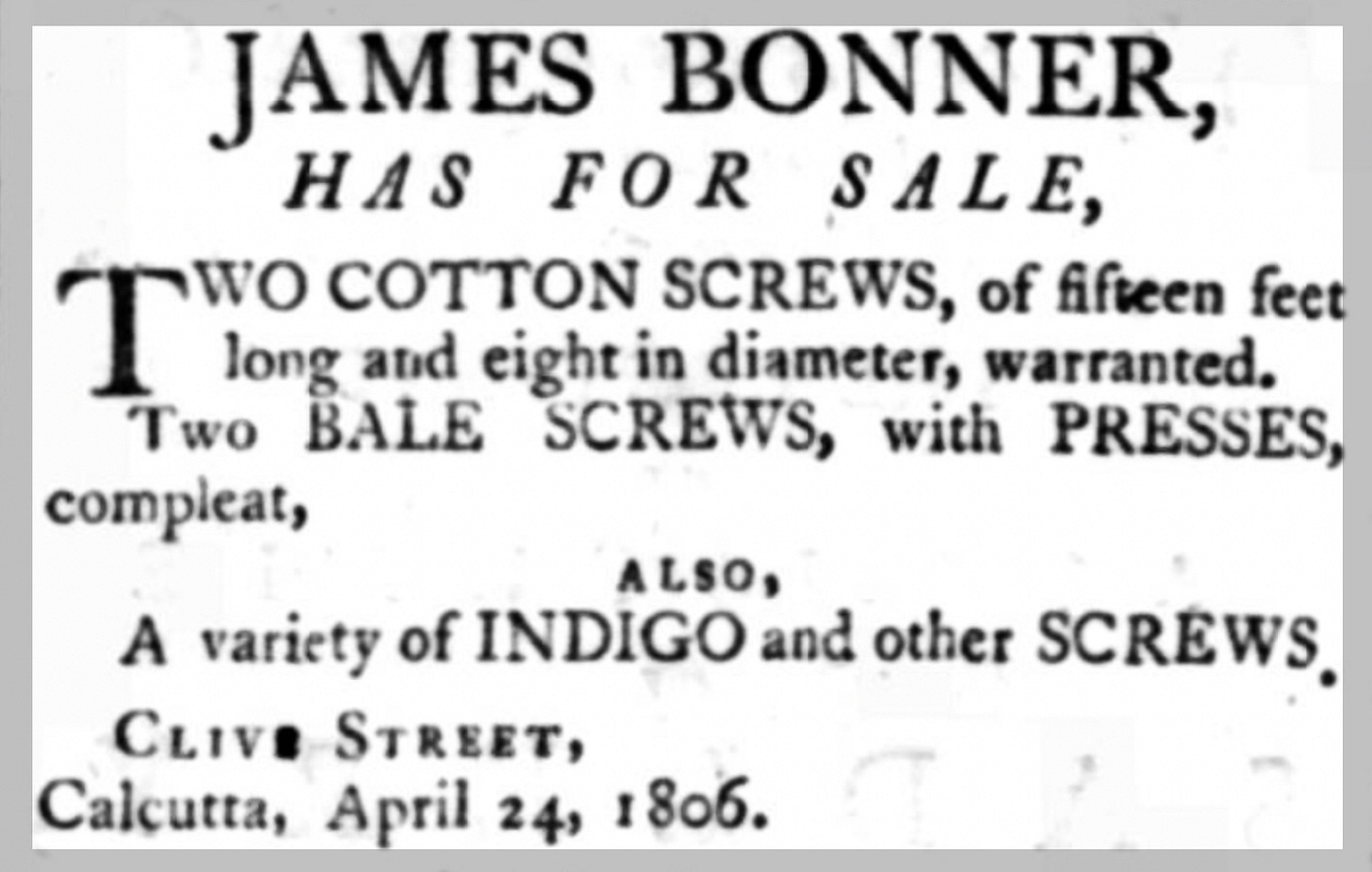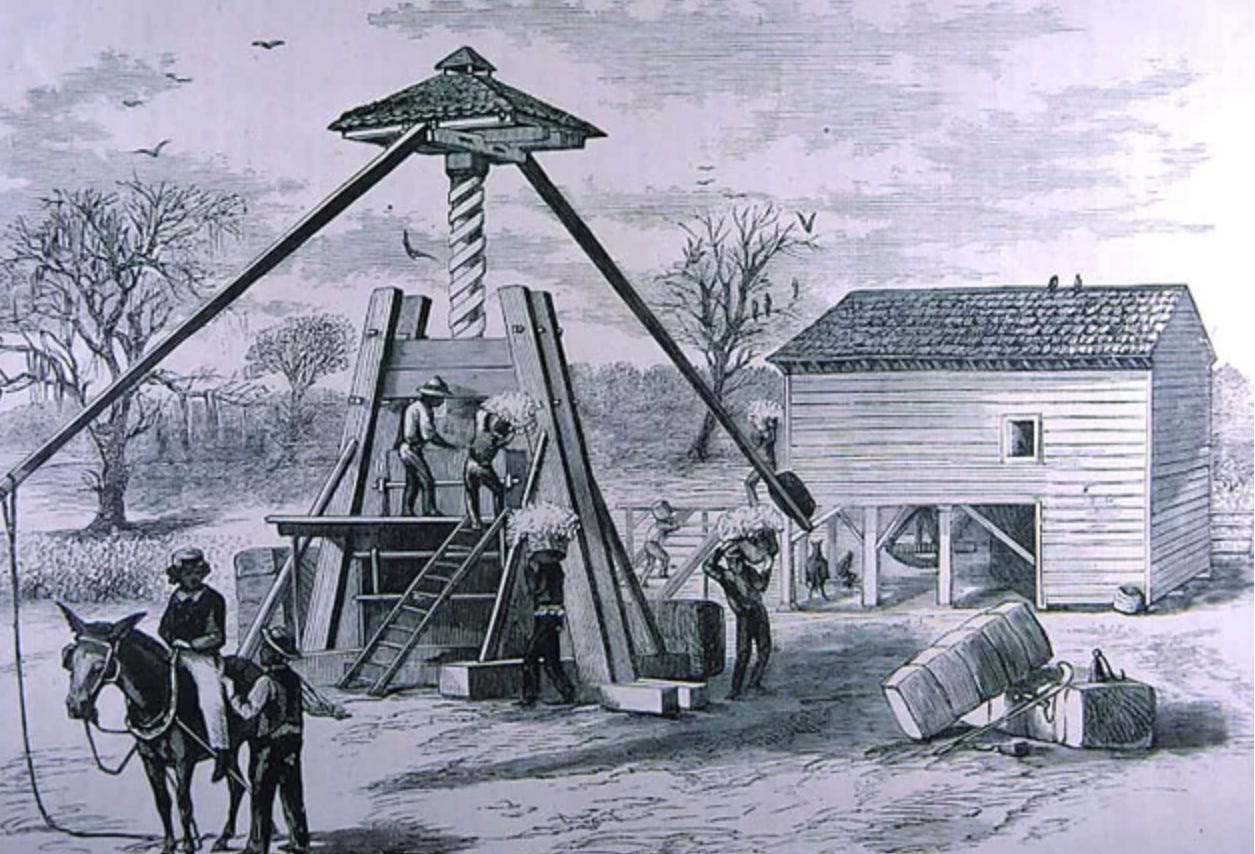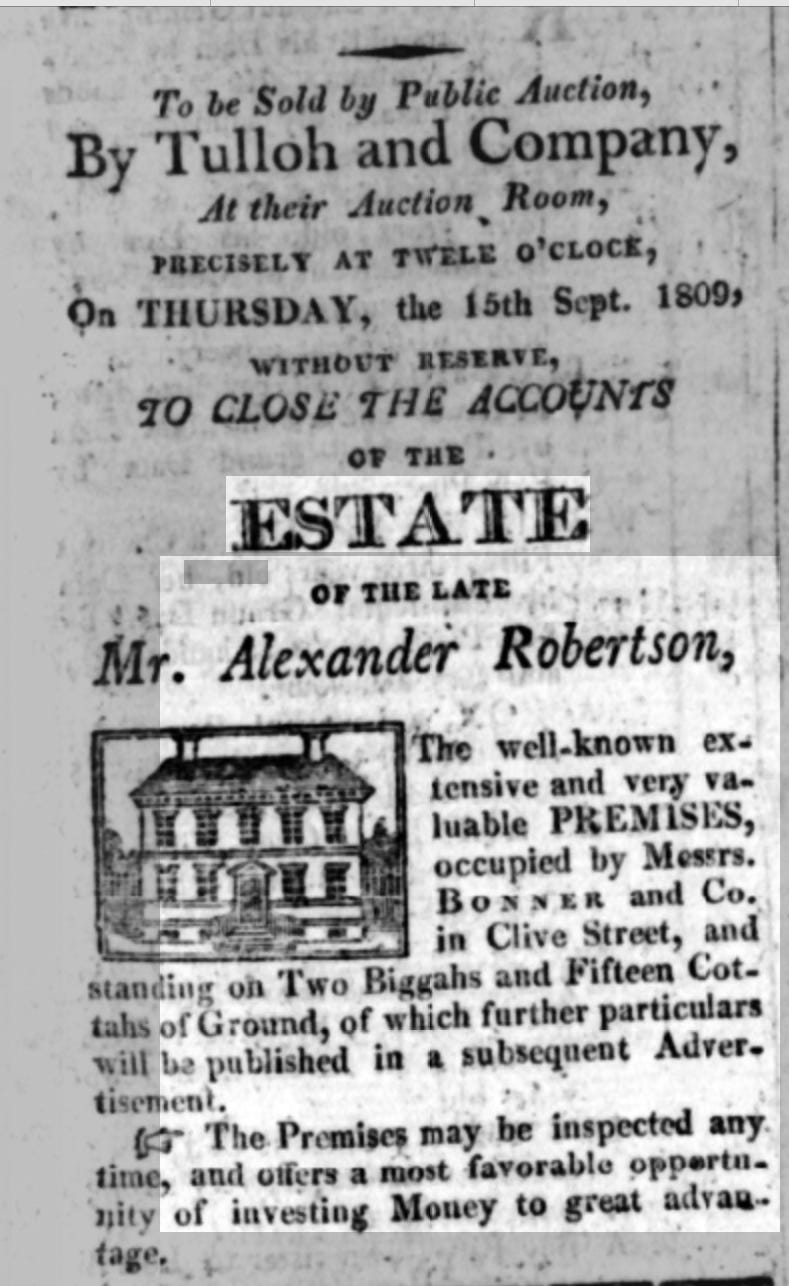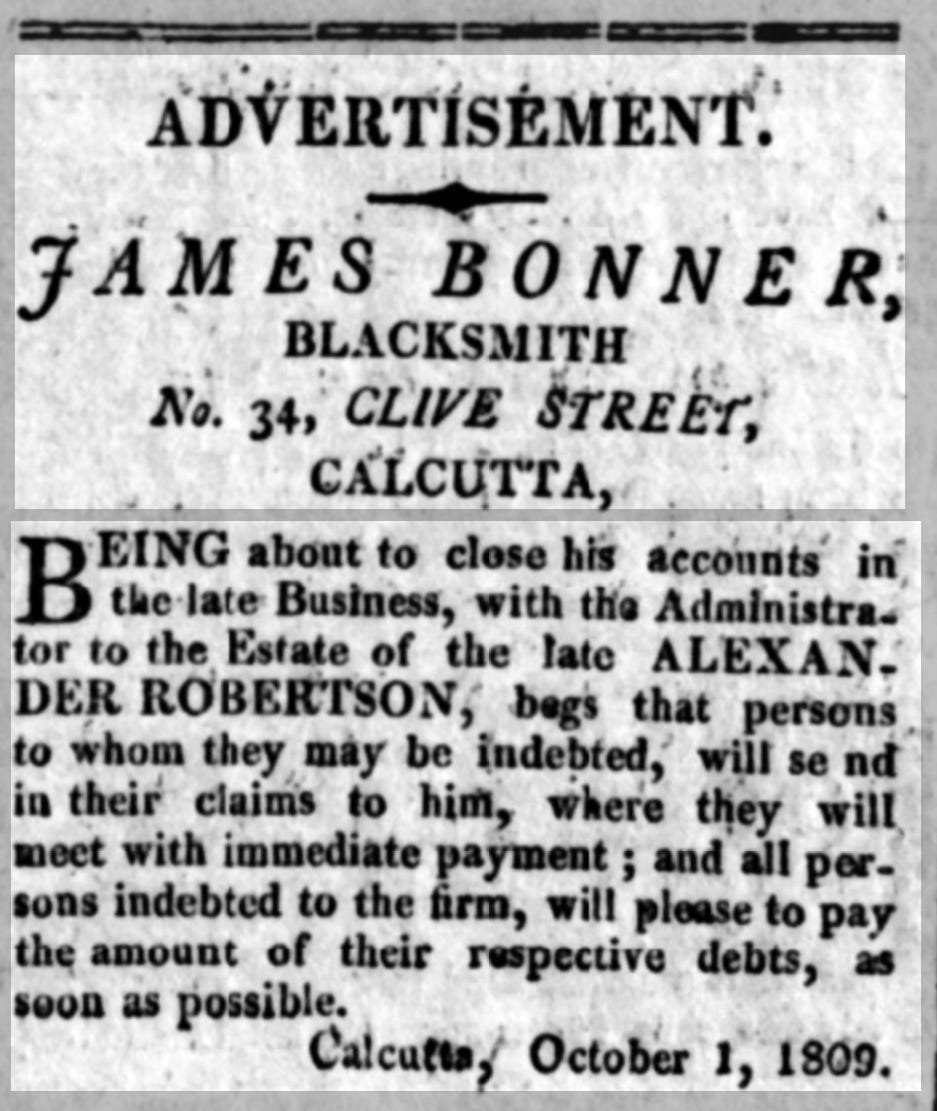Part 2: James Bonner's career Blacksmithing in Calcutta
James Bonner’s story continued in Calcutta, 1791-1809
James Bonner arrived in India when the average life expectancy of foreign settlers was only ~32 years old. He managed to survive the extreme heat, tropical diseases (and tigers) for 22 years, until his return to England at the age of ~43, all while building a new and impressive life for himself. This part of the story looks at his early life in Calcutta.
James left London in ~1791, aboard the ‘Nottingham’, as a Blacksmith in the employment of the East India Company. Usually, passages to India could take at least six months. I don’t yet have an exact date of his arrival, however, in 1804 we can see he’s residing in Sulkea, which is opposite Calcutta, on the other bank of the Hooghly River. We can assume he was working in the docks building anchors for ships, continuing the trade he undertook in Woolwich.
In 1805, we see a note in the Calcutta Gazette stating that James has become the successor to the blacksmith business of a Mr William Waite, on Clive Street, Calcutta. Calcutta at this time was already a well established city, being the capital of British India from 1772 - 1911 and Clive Street was its business hub, known as the ‘Wall Street of the East’.

I don’t yet know whether James and William knew each other, or whether James simply saw the opportunity to start his own Blacksmith business when Mr Waite’s became available. There are a few advertisements earlier that same December in the Calcutta Gazette auctioning off Mr Waite’s estate, which includes property, ships, a marine yard and his blacksmith ‘stock and trade’. So I’m assuming it’s the latter.
It seems James branched out to also sell certain wares including ‘Cotton and bale screws’ as well as those for indigo.

I believe the ‘cotton screws’ are something like what is pictured below. They were used to compress cotton so that more could be squeezed into the ships hulls, transporting it back to England.

He also sold screws and presses for indigo, which is a naturally sourced dye, used in Egypt and Asia for over 4,000 years. It became one of the most profitable commodities for the British Raj and the East India Company. This article takes an interesting look at the history of indigo farming in Bengal (where Calcutta is located).

It looks like James may have rented the property on Clive Street from an ‘Alexander Robertson’. After Robertson’s death in 1809, we see a couple of notices in the Calcutta Gazette stating that ‘Bonner & Co was a tenant of his ‘extensive and very valuable premises’.

It looks like James closed his business on Clive Street following Robertson’s death, as we see in this advertisement a few weeks later.

I’m still figuring out what James did between closing his blacksmith shop in 1809 and his departure for England in 1813. I suspect he focused on his other enterprise; ship building.
One key person in his ship building story was a ‘Mr James Horsburgh’. Horsburgh was a Cooper (someone who worked with wood to make barrels and similar containers like buckets and tubs). He was the partner to James Bonner’s landlord, Alexander Robertson, in his Cooper business. It’s probable that Bonner and Horsburgh met on Clive Street and at some point brought their complimentary craftsmanship in wood and metal to ship building.
In the next part of this series, I’ll uncover more on this ship building business, as it led to the launch of two historically significant vessels.




